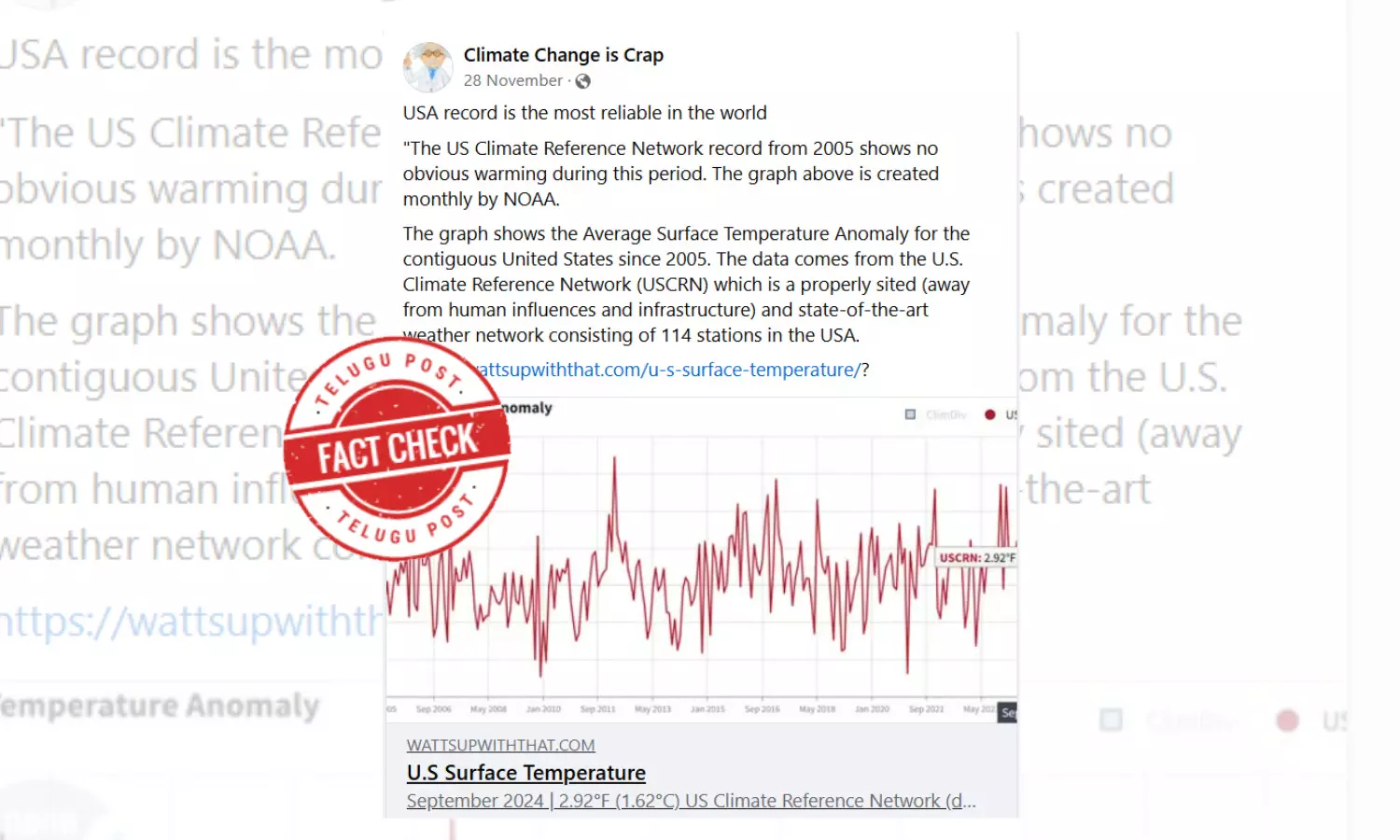Fact Check: Social media post on US Climate Network’s graph is False, USCRN data shows clear warming trend
Social media post on US Climate Network’s graph is False, USCRN data shows clear warming trend

Claim :
A Facebook post asserts that data from the U.S. Climate Reference Network (USCRN) indicates "no obvious warming" in the United States since 2005Fact :
This claim is incorrect. USCRN data shows a clear warming trend in the U.S. from 2005 to 2023.
The Facebook post presents a graph of USCRN temperature data spanning 2005 to 2024, suggesting that the scattered data points and absence of a trend line indicate no significant warming during this period. The post implies that the U.S. has not experienced noticeable temperature increases over the past two decades.
Click here to view the link.
Fact Check:
The claim that the U.S. Climate Reference Network (USCRN) data shows "no obvious warming" in the United States since 2005 is false.
The U.S. Climate Reference Network (USCRN), managed by the National Oceanic and Atmospheric Administration (NOAA), comprises over 100 climate monitoring stations situated in pristine, undeveloped locations across the United States. These stations are strategically placed to avoid urbanization effects, ensuring that the data collected remains unaltered by such factors over time.
Contrary to claims suggesting a lack of recent warming, USCRN data indicates an average annual temperature increase of approximately 0.47 degrees Fahrenheit per decade from 2005 to 2023. This trend is corroborated by NOAA's broader dataset, encompassing over 10,000 stations with records dating back to 1895, which shows a long-term warming trend of about 0.16 degrees Fahrenheit per decade.
It's important to recognize that Earth's climate exhibits natural variability. As such, a 20-year period may not suffice to establish a definitive trend. The World Meteorological Organization, for instance, utilizes 30-year periods to define "climate normals." Therefore, while recent data is indicative, longer timeframes provide a more comprehensive understanding of climate trends.
Unlike the unadjusted data from the USCRN, NOAA's extensive dataset includes adjustments to account for factors such as urbanization and changes in station locations. Comparing trends between adjusted and unadjusted datasets during overlapping years enables scientists to validate the accuracy of these adjustments.
Over the past several decades, average global temperatures have been on the rise, primarily due to the accumulation of greenhouse gas emissions from human activities. Notably, the United States has experienced warming at a rate exceeding the global average.
The claim that the U.S. Climate Reference Network (USCRN) data shows "no obvious warming" in the United States since 2005 is false. Comprehensive analyses of USCRN data indicate a clear warming trend during this period, aligning with broader climate datasets and reinforcing the consensus on rising temperatures due to human-induced greenhouse gas emissions.
